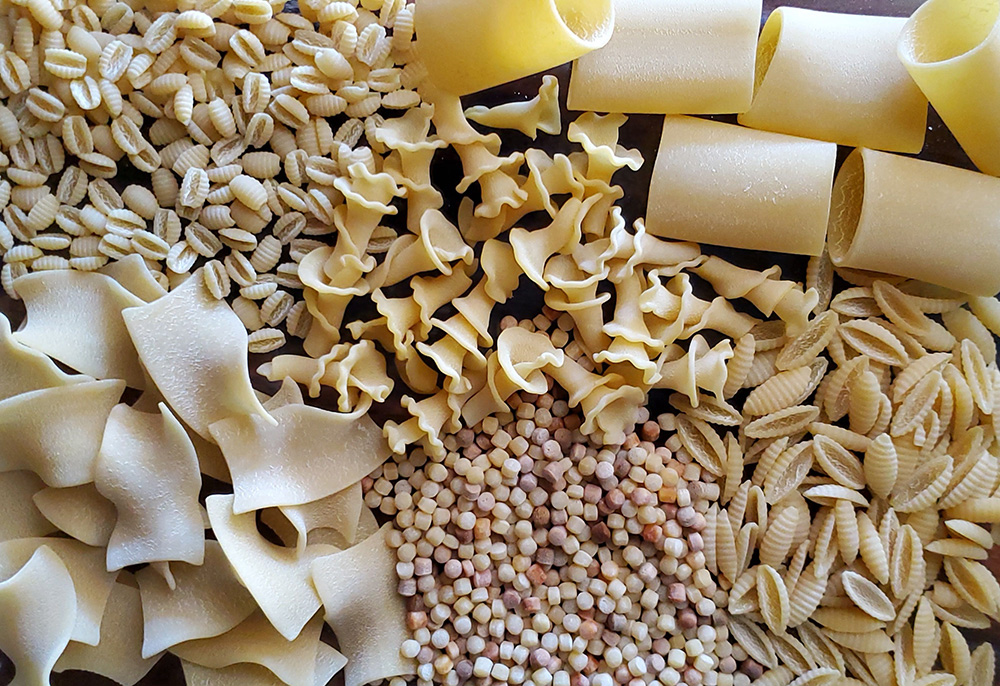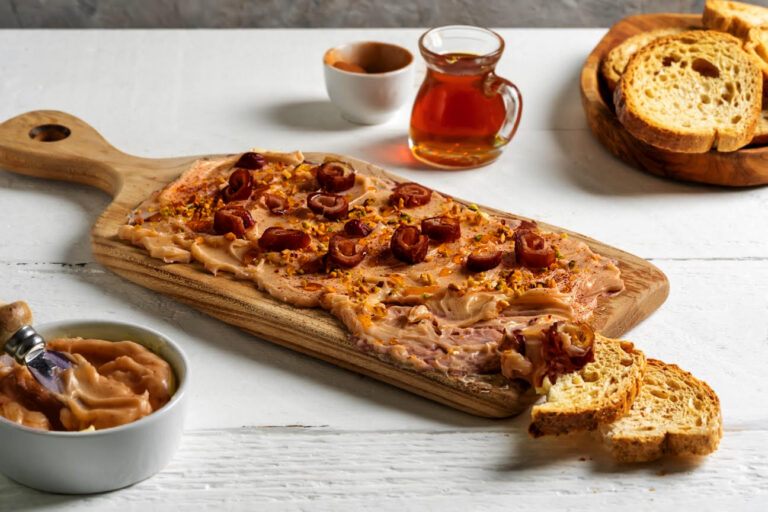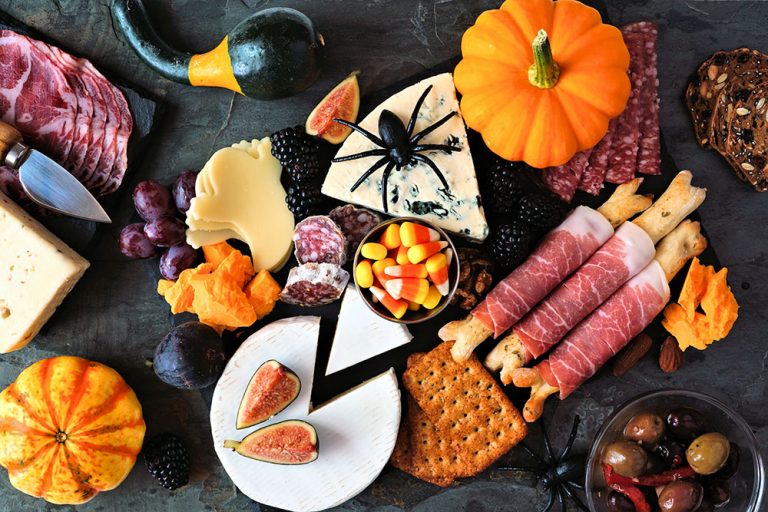
Pasta shapes are used as one of the main methods used to classify pasta, a staple food of Italy. There are well over 600 different types of pasta that come in various shapes, sizes and functionality (i.e. how they are used in various dishes). Pastas generally fall into one of several categories of pasta shapes. These are corkscrew, long, tubular, soup shell and special shapes pastas.
List of Different Pasta Shapes
Because there are literally hundreds of pasta shapes in existence (and new shapes that continue to be created over the years), it is nearly impossible to keep track of them all. However, if you are a pasta-lover, here are some of the more interesting pasta shapes besides your basic spaghetti and macaroni that you may want to consider adding to your pantry.
corkscrew pasta
- fusilli – Fusilli pasta is a corkscrew-shaped pasta that can be short or long. In Italian, the word “fusillo” means “little spindle”, which refers to its shape and how it twirls onto itself when agitated in a circular motion. It works well with chunky sauces and pairs well with cheese and vegetables.
- rotini – Rotini is a corkscrew-shaped pasta that can be short or long. Similar to fusilli, rotini has a slightly curved edge on one side and a dimple in the center of the other side. The name “rotini” comes from the Italian word for “little wheels”. Rotini works well with chunky sauces or can be baked with cheese or vegetables.
long pasta
- bucatini – Bucatini is a type of thick spaghetti with a hole running through the center. It’s made by passing long, thin strips of pasta dough repeatedly through a device that forms round tubes about the thickness of a pencil lead. The resulting pieces are then cut to size and dried. Bucatini is traditionally served with thicker sauces that cling to it.
- fettucine – Fettuccine is a type of flat nooodle pasta, traditionally made from an egg-based dough. The name means “little ribbons” or “tapes” in Italian. Fettuccine is usually served with a cream or oil-based sauce.
- linguine – Linguine is a type of flat noodle pasta that is thinner and more delicate than fettucine. It can be made from several different types of flour including wheat and rice.
- pappardelle – Pappardelle is a wide flat noodle pasta, similar to broad ribbon pasta. It hails from the Tuscany region of Italy.
- tagliatelle – Tagliatelle is flat ribbon pasta that is slightly wider, yet thinner than fettucine. It’s made with egg dough and typically served with a Bolognese sauce.
tube / tubular pasta
- cavatappi – Cavatappi pasta is a tube-shaped pasta that can be short or long. It is similar to fusilli, except it curves around itself in a classic snail shape rather than twirling onto itself like fusilli. It works well with chunky sauces and pairs well with cheese and vegetables.
- paccheri – Paccheri is a type of long, smooth tube pasta that’s named after the Neapolitan word paccharia meaning “slaps” since a slapping sound is created when eaten . Paccheri pasta resembles large smooth tubes of pasta.
- paccheri millerighe – Paccheri millerighe is simply a version of paccheri with ridges.
- penne – Penne pasta is a tube-shaped pasta that is approximately 1/2″ in diameter and 4″ long. In Italian, the word “penne” means “quills”, which refers to its tubular shape. It works well for most creamy or chunky sauces and can also be baked.
- penne rigate – Penne Rigate has ridges running down the length of the penne, which helps to trap and hold on to pasta sauces. Though similar to regular Penne, it is typically a little shorter in length and not as wide. It works well with almost any type of sauce but specifically pairs well with vegetable or cream sauces.
- ziti – Ziti is a tube-shaped pasta that is approximately 1/2″ in diameter and 4-6″ long. In Italian, the word “zitoni” means “large tubes”, which refers to its slightly larger than average size compared to other types of tube pastas. It pairs well with almost any type of sauce and works best when baked with a cheese or vegetable sauce.
shell pasta / stuffed pasta
Shell pasta is shaped like a hollow tube that forms a shell-like shape when run along the ridges of a fork. It works well with chunky sauces or can be stuffed using cheese or vegetables for something more substantial.
- cicioneddos – Cicioneddos is a small shell pasta from Sardinia. It is a smaller version of malloreddus.
- malloreddus – Malloreddus (a.k.a. Sardinian gnocchi) is small, chewy traditional Sardinian shell pasta made from durum wheat and flavored with saffron. They’re the official pasta of the ancient city-state of Nuoro (the second largest province in Sardinia).
- malloreddus allo zafferano – Malloreddus allo zafferano a version of malloreddus made with saffron and is often slightly more elongated. This pasta originated in Cagliari, but now it can be found all over Sardinia.
soup pasta
Soup pastas are so small that they cannot hold much sauce and act as a filler to a dish. They are generally best for soups, salads and stews.
- acini de pepe – Acini means “grains” in Italian. So, acini de pepe are little balls of pasta. Their shape resembles that of peppercorns, which is why this type of pasta is named after them (“acini di pepe”).
- fregola – Fregola is an Italian pasta, similar to couscous. It’s typically made in the south of Italy, on the island of Sardinia.
special pasta shapes
These are the pasta shapes that don’t clearly fall into any of the aforementioned categories.
- gigli di semola – Gigli di semola is a ruffled cone-shaped pasta. In Naples, it’s been a common tradition to use the leftover from pasta making to make a delicious bread called ‘gigli di semola’ (in english: ‘wheat lilies’).
- orecchiette – Orecchiette pasta is a small, disk-shaped pasta with a slightly curved edge on one side and a dimple in the center of the other side. In Italian, the word “orecchio” means “ear”, which refers to its ear-like shape. It works well with thick sauces made from vegetables, beans, sausage or pasta.
- taccone – Taccone is a flat, square shaped pasta from Campania, Italy. It is about an inch in length and width.
Where can I get different pasta shapes?
Depending on the authenticity and specialty of the Italian restaurant you eat at, you may be able to find one or more of the less common shapes.
You can find all types of pasta at your local Italian grocer, the nearest “Little Italy” or online. Here are several places you can shop for various pasta shapes:











